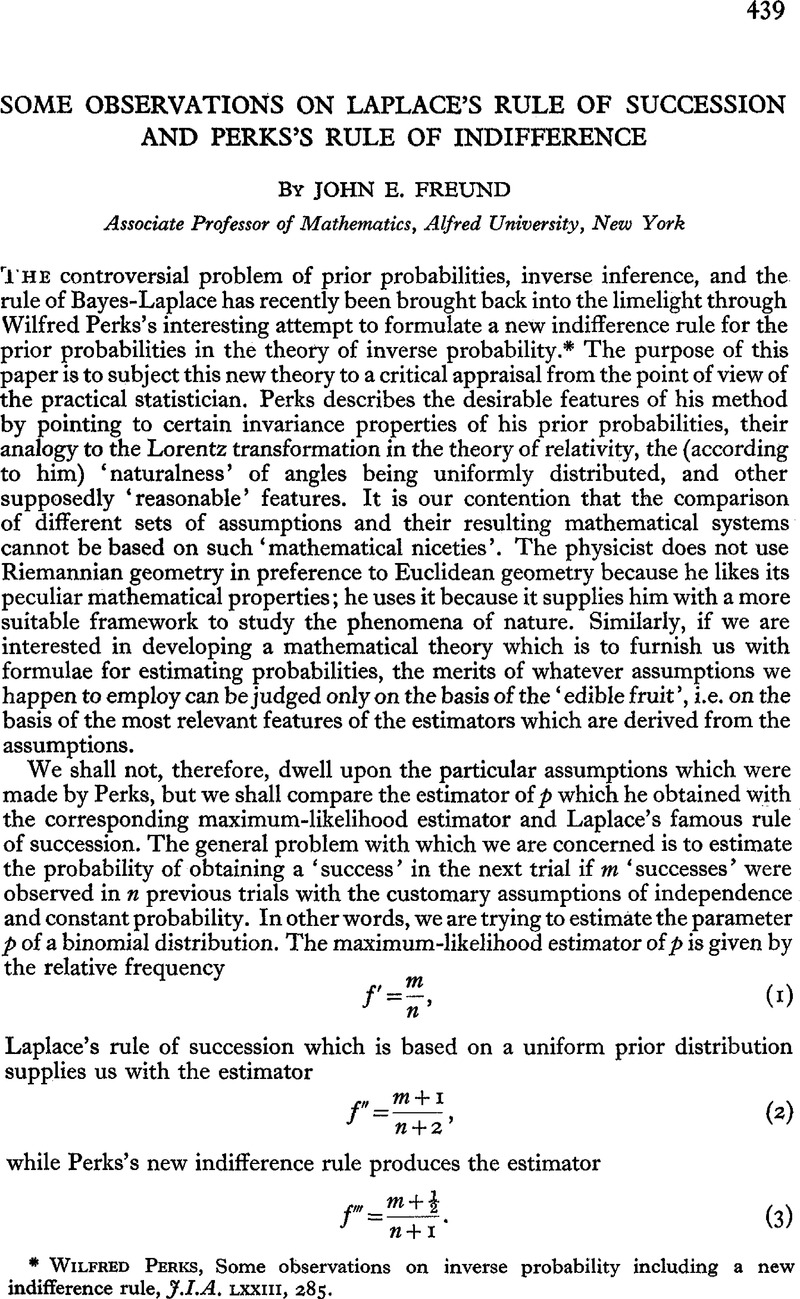Article contents
Some observations on Laplace's rule of succession and Perks's rule of indifference
Published online by Cambridge University Press: 18 August 2016
Abstract

- Type
- Other
- Information
- Copyright
- Copyright © Institute and Faculty of Actuaries 1951
References
page 439 note * Wilfred Perks, some observations on inverse probability including a new indifference rule, J.I.A. LXXIII, 285.
page 442 note * It has recently been shown by J. L. Hodges and E. L. Lehmann, ‘Some problems in minimax point estimation’, Ann. Math. Statist. XXI, no. 2 (1950), that the maximum Value of s 2 is least for the estimator
This estimator is, however, more efficient than the estimators which we have discussed only when p is very close to ½. The length of the interval where it is most efficient approaches o with increasing n.
page 442 note † If we interpret the prior probabilities of a parameter θ in the sense of R. Von Mises, ‘On the correct use of Bayes's formula’, Ann:Math. Statist. XIII, 1942, a discretes et of such prior probabilities f(θ) can itself be considered as a set of population parameters which are to be estimated by means of some standard technique, e.g. maximum likelihood.
page 444 note * See p.3 91.
- 1
- Cited by


